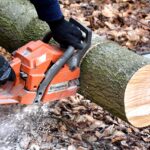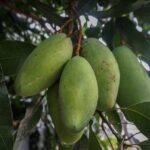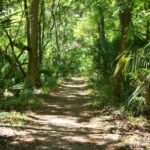Nature’s Giants: How to Grow Bitternut Hickory Trees from Seeds

The bitternut hickory (Carya cordiformis) is a majestic native North American tree that can reach heights of 60-80 feet with a straight trunk and rounded crown. Growing these impressive trees from seeds is a rewarding, long-term project that connects you to future generations. This guide will walk you through the process of growing bitternut hickory from seed to magnificent mature tree.
Understanding Bitternut Hickory Seeds
Bitternut hickory seeds are contained within a characteristic husk. Other hickories have thick, woody husks, but bitternut hickory seeds have thin, yellow-green husks with four winged ridges that open up when ripe. The seed within is smooth, thin-shelled, and bitter (hence the common name).
Every autumn, large trees yield large quantities of seeds that disperse under their canopy. The seeds are highly valued as food for wildlife, although less palatable for people because of their bitter taste in comparison to other hickory species.
When to Collect Bitternut Hickory Seeds
Timing is crucial when collecting bitternut hickory seeds:
- Collection period: Late September through October
- Signs of readiness: Husks turning from green to yellowish-brown and beginning to split
- Best practice: Collect seeds directly from the tree or soon after they’ve fallen
Fresh seeds have the highest viability rates, so plan your collection accordingly. The longer bitternut hickory seeds remain on the ground, the greater the chance they’ll be consumed by wildlife or begin deteriorating.
Preparing Bitternut Hickory Seeds for Germination
Bitternut hickory seeds require special treatment to break dormancy:
- Remove the husk: Carefully peel away the outer husk if it hasn’t already split open.
- Cleaning: Rinse the seeds thoroughly to remove any residue or potential mould.
- Float test: Place seeds in water – viable seeds sink while empty ones float.
- Stratification: Bitternut hickory seeds require cold stratification to germinate.
Cold Stratification Process
For successful germination, bitternut hickory seeds need to undergo a cold period that mimics winter conditions:
- Mix seeds with slightly damp sand, peat moss, or vermiculite in a plastic bag or container
- Label the container with the date and “bitternut hickory seed”
- Refrigerate at 33-41°F (1-5°C) for 90-120 days
- Check periodically for signs of premature germination or mould
This stratification process breaks the seed’s internal dormancy, preparing it for spring germination.
Planting Stratified Bitternut Hickory Seeds
After the stratification period:
- Timing: Plant in early spring after the last frost
- Planting options:
- Direct sow outdoors in their permanent location
- Start in deep pots (minimum 12″ deep) to accommodate the taproot
- Planting depth: 1-2 inches deep
- Spacing: If planting multiple seeds, space at least 40-60 feet apart for mature trees
When growing bitternut hickory from seed in containers, use a well-draining soil mix with added compost. The deep containers are essential as hickories develop long taproots very quickly.
Caring for Young Bitternut Hickory Seedlings
Young bitternut hickory seedlings require attentive care:
- Watering: Keep soil consistently moist but not waterlogged
- Sunlight: Provide partial shade initially, gradually increasing sun exposure
- Protection: Guard against rodents, deer, and other wildlife that may nibble young trees
- Mulching: Apply 2-3 inches of mulch around seedlings (keeping it away from the trunk) to retain moisture and suppress weeds
Growth will be slow initially, as bitternut hickory trees invest energy in developing their root system before significant above-ground growth occurs.
Transplanting Bitternut Hickory Seedlings
If you started your bitternut hickory seed in a container:
- Transplant to a permanent location after 1-2 years
- Choose the transplanting time carefully – early spring is ideal
- Dig a hole twice as wide as the root ball, but only as deep
- Carefully position the tree, being mindful of the sensitive taproot
- Backfill with original soil, water thoroughly, and add mulch
Long-Term Care for Growing Bitternut Hickory Trees
As your bitternut hickory tree grows:
- Watering: Deep, infrequent watering during dry periods for the first 2-3 years
- Fertilisation: Generally unnecessary in good soil, but a balanced fertiliser can be applied in spring if growth seems slow
- Pruning: Minimal pruning needed – focus on removing damaged or crossing branches
- Growth expectations: Patience is key – hickories grow slowly, adding about 12-24 inches per year
The Reward of Growing Bitternut Hickory from Seed
Growing bitternut hickory trees from seed is truly planting for future generations. These trees can live 200+ years and provide numerous benefits:
- Valuable hardwood timber
- Food source for wildlife
- Fall colour with brilliant golden-yellow foliage
- Improved air quality and carbon sequestration
- Erosion control through extensive root systems
The process from bitternut hickory seed to towering tree is arduous but very fulfilling. By planting these native behemoths, you’re establishing a living heritage that will endure far beyond many human buildings and offer ecological rewards for generations to come.
Whether you’re planting a lone specimen tree or creating a hickory stand, beginning with bitternut hickory seeds places you in touch with the age-old cycles of nature and the pleasure of raising a tree that one day might stand towering over your grandchildren’s grandchildren.



